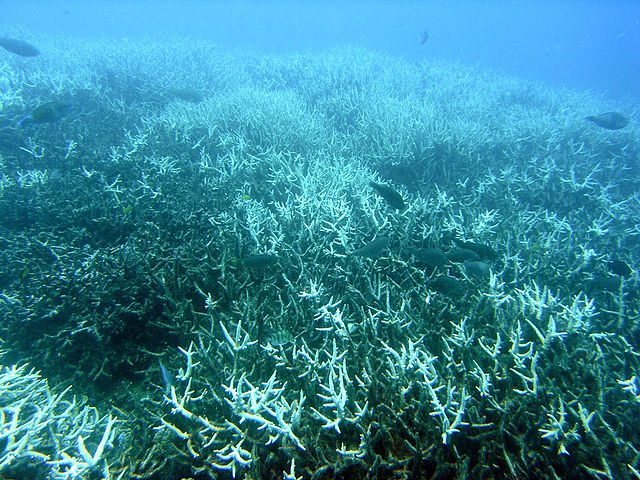Coral reefs have been described as the rainforests of the ocean. Harbouring almost a quarter of the world’s marine fish species, the reefs cover only 0.2% of the area of all the world’s oceans, making them a hotspot for biodiversity1.
Coral reefs are made of the primordial creature coral polyp, and the hard calcium carbonate skeleton it produces as waste. It has a symbiotic relationship with the microscopic planktonic organism Zooxanthellae that lives inside the coral. The algae is the coral’s main source of nutrients and hence is important for the health of the reef. However, the organism is sensitive to stresses such as changes in sea temperature – as little as a degree Celsius of change can cause bleaching. Coral reef bleaching occurs when Zooxanthellae are expelled from the coral, which eventually turns the colour to white, as they give colour to the reef. This causes the reef to shrink from a lack of nutrients, and eventually die2.
During extreme El Niños, mass coral reef bleaching occurs. Due to climate change, extreme El Niños are set to be twice as frequent, with the current El Niño giving way to the third mass bleaching event ever recorded, as it brings above average temperatures to a large reef bearing area. The National Oceanic and Atmospheric Admisistration predicts that 38% of coral reefs will experience bleaching this year, with 5% set to die completely, despite coral reefs being well known for their moderate resilience to bleaching events3.
The livelihoods of an estimated 6 million fishermen in 99 reef countries and territories are reliant on coral reefs. With degradation of the coral reefs from bleaching, the reefs can no longer provide coastal protection from wave erosion and tropical storms, which would affect many more people – in fact, the socio-economic impacts of the event would be highly negative for the locals, who rely on the reefs4. To minimise the biodiversity and socio-economic losses, a strategy must be put in place to reduce or eliminate as many stressors as possible. This could be done by implementing a curb on overfishing through no-take zones over vulnerable reefs, for example. With these measures, the chances of reef recovery is maximised, the security of many jobs and the safety of many coastal areas are maintained.5
Edited by Debbie Nicol
References
- Consisting of useful basic facts http://www.defenders.org/coral-reef/basic-facts
- Bleaching infographic http://oceanservice.noaa.gov/facts/coral_bleach.html
- El Nino and how much it’ll affect the coral reefs https://www.newscientist.com/article/dn28310-global-coral-bleaching-event-what-you-need-to-know/
- Socio-economic impact statistics http://coral.org/coral-reefs-101/coral-reef-ecology/coral-reef-biodiversity/
- Methods to maximise reef resilience http://www.reefresilience.org/coral-reefs/reefs-and-resilience/coral-reefs-coral-reef-resilience/

